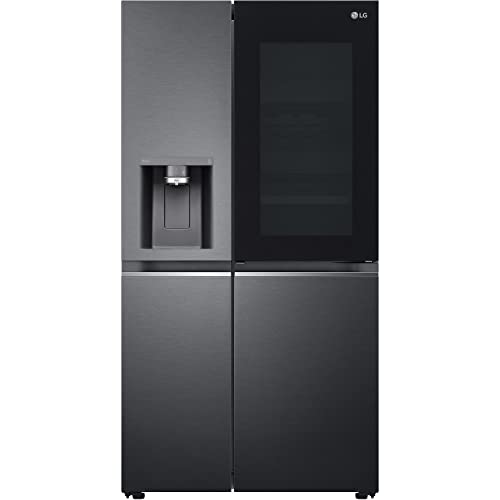The Most Negative Advice We've Ever Heard About Fridges
The Ultimate Guide to Buying a Fridge: Making Smart Choices for Your Kitchen
When it concerns important kitchen area devices, few items are as important as a refrigerator. It is the heart of the cooking area— keeping your food fresh and your ingredients at ideal temperatures. However, picking the ideal fridge can be a difficult job, given the range of designs, sizes, and innovations readily available on the market. This guide will provide important insights into the elements to think about when purchasing a fridge, typical types, and frequently asked questions to help you make an informed decision.
Key Factors to Consider When Buying a Fridge
To simplify your decision-making procedure, here are the core aspects one must think about when looking to buy a fridge:
1. Size
- Cooking area Space: Measure the space in your cooking area where the fridge will be positioned. This consists of inspecting entrances to guarantee the fridge can be delivered without concern.
- Capability: Consider how much food you typically keep. A bigger household might need a fridge with a capacity of 20-26 cubic feet, while smaller sized families may discover 10-18 cubic feet enough.
2. Style
- Top Freezer Refrigerators: A conventional choice that includes a freezer on top. They are typically more inexpensive and energy-efficient.
- Bottom Freezer Refrigerators: Offers convenience by positioning the refrigerator section at eye level. Perfect for those who access fresh food more frequently.
- Side-by-Side Refrigerators: Provides easy access to both freezer and fresh food areas. Helpful for narrow cooking areas.
- French Door Refrigerators: Combines the benefits of bottom freezers with side-by-side layouts. They often come with additional functions such as ice and water dispensers.
- Compact Refrigerators: Perfect for small spaces like dorm rooms or workplaces.
3. Energy Efficiency
- Search for energy-efficient designs to save money on electrical energy expenses. Inspect the Energy Star label, which suggests that the appliance satisfies or goes beyond energy efficiency standards.
- Consider the average annual energy consumption reported in kilowatt-hours (kWh).
4. Features
- Ice and Water Dispenser: Convenient for immediate access to ice and filtered water.
- Smart Technology: Some fridges come equipped with Wi-Fi connection that permits you to keep track of and change settings from your smart device.
- Adjustable Shelves and Bins: For personalized storage to accommodate high items.
- Temperature Level Control Zones: Different locations might have various climate controls for ideal storage of various foods.
5. Rate
- Set a budget. Where To Buy A Fridge can vary from a couple of hundred to numerous thousand dollars depending upon style, size, and functions.
- Consider additional costs such as prolonged warranties, delivery, and setup.
Relative Table of Popular Fridge Styles
Fridge Style
Typical Price Range
Pros
Cons
Top Freezer
₤ 400 – ₤ 1,200
Budget-friendly, energy-efficient
Minimal functions
Bottom Freezer
₤ 900 – ₤ 2,500
Easy access to fresh food
Can be costly
Side-by-Side
₤ 600 – ₤ 3,000
Great company, simple access
Freezer space can be restricted
French Door
₤ 1,200 – ₤ 4,000
Roomy, stylish, often feature-rich
Greater cost point
Compact
₤ 150 – ₤ 600
Space-saving, portable
Limited storage capacity
Frequently Asked Questions (FAQs)
1. For how long do refrigerators usually last?
Usually, a well-maintained refrigerator can last around 10 to 20 years. Regular upkeep, such as cleaning the coils and checking door seals, can lengthen its life-span.
2. How can I keep my fridge efficiently?
- Keep the coils clean to assist keep energy efficiency.
- Make sure that the door seals are tight to prevent cold air from leaving.
- Routinely thaw (if relevant) and clean the interior to avoid build-up of germs and smells.
3. Do I require to pay for delivery and installation?
A lot of sellers charge for delivery and installation, but this charge can often be waived during promotions. Constantly confirm the charges before finishing your purchase.
4. What should I do if my fridge is not cooling properly?
Start by checking the temperature level settings and make sure the vents are clear of any obstructions. If the problem persists, it may be essential to speak with a professional repair service.
5. How can I identify the size of the fridge I need?
As a basic guideline, allow for about 4 to 6 cubic feet of space per person in your household. However, this can vary based upon specific cooking and storage routines.
Buying a refrigerator may appear easy, but it requires careful factor to consider of various elements. By examining your requirements and preferences in terms of size, style, features, and energy efficiency, you're much better positioned to pick a fridge that will serve your home well for many years to come. This guide aims to streamline the intricacies associated with fridge shopping, empowering you to make an informed decision that will improve your kitchen experience. Whether you're updating or purchasing your first unit, a little research study can result in a refrigerator that completely fits your way of life and cooking habits.
